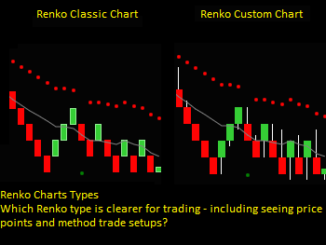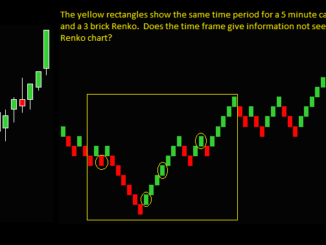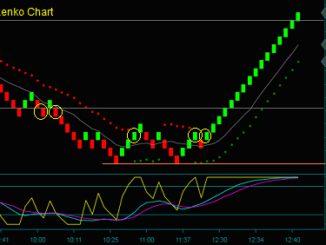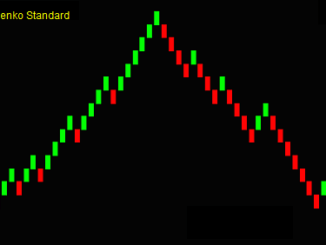
Different Renko Chart Bricks: Classic And Price Wicks
There are 2 Renko chart bricks types: the classic and the price wicks bricks. The primary differences are the classic chart shows completed bricks only, while the price wick charts show additional price movement. Although the additional price isn’t seen on the completed classic chart, real time all prices are seen on both charts.
If both Renko brick types show all price while the bricks form, which chart best shows the Renko trading strategies? And, how do Renko bricks compare to candlestick charts for trading?




